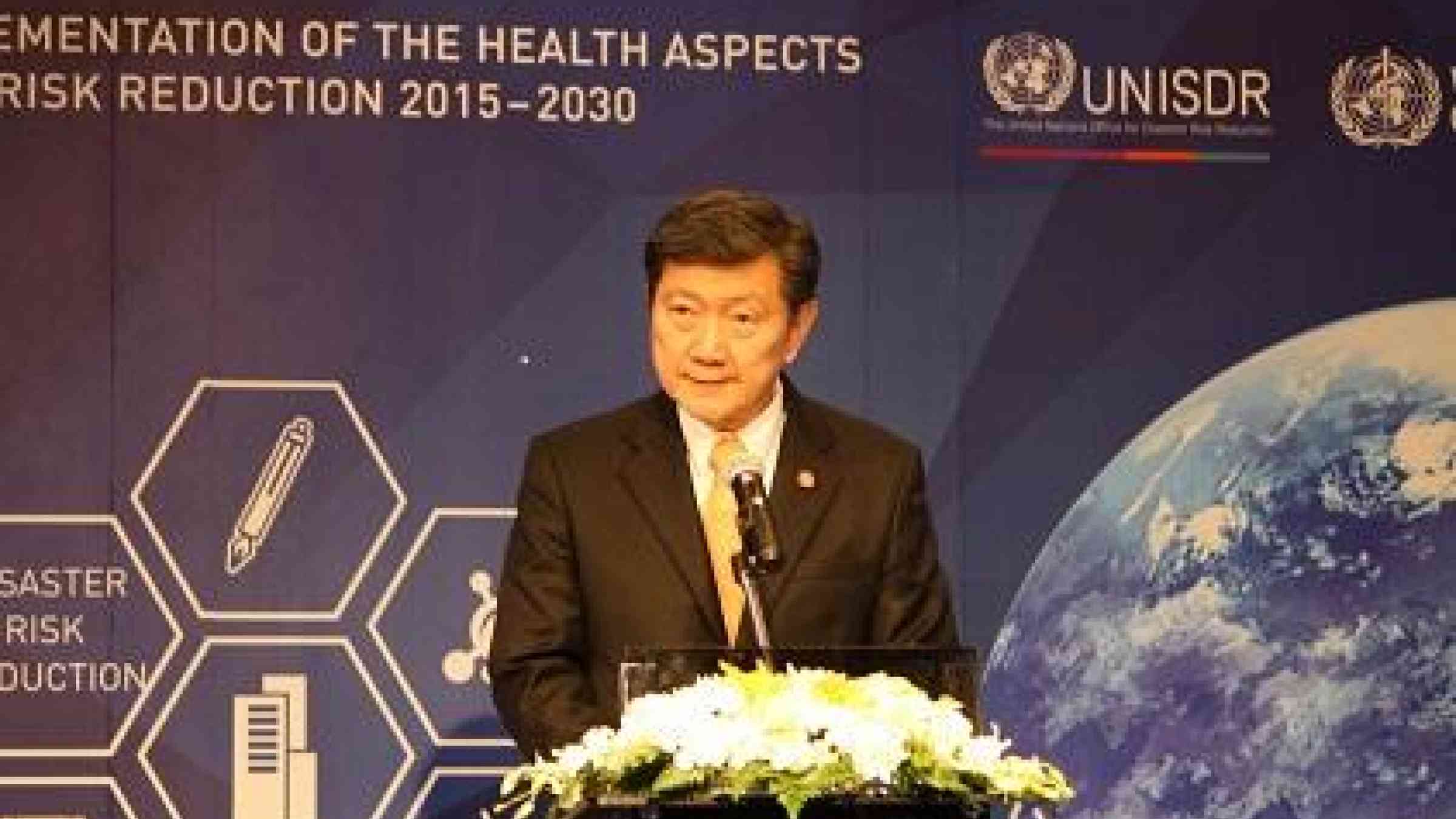Bangkok Principles on health risk agreed

BANGKOK, 11 March 2016 – Government officials and hazard risk management experts from various sectors today called on countries to put health resilience at the heart of disaster risk management in the face of crises such as the Zika virus outbreak.
They agreed seven recommendations to help countries face up to the fact that biological hazards “are part of the new normal and are here to stay”, in the words of Dr Bruce Aylward, the World Health Organization’s Executive Director a.i. Outbreaks and Health Emergencies.
The International Conference on the Implementation of the Health Aspects of the Sendai Framework for Disaster Risk Reduction 2015-2030 recommended the measures to prevent and/or reduce the risk of health emergencies such as pandemics that have the potential for huge social and economic impact.
The so-called ‘Bangkok Principles’ place strengthened coordination at the heart of efforts to reduce risk from biological hazards. They call for an inter-operable, multi-sectoral approach to promote systematic cooperation, integration and, ultimately, coherence between disaster and health risk management.
The Principles build on the commonality between the two realms, such as the shared need for risk assessment, surveillance and early warning systems, resilient infrastructure, and coordinated incident management. This strengthened coherence is needed as the inter-connected and trans-boundary nature of hazard risk increases.
The Ebola epidemic in West Africa and the Zika virus outbreak both demonstrated the need for a multi-hazard approach to strengthen health resilience.
The Chair of the Conference, Mr. Thani Thongphakdi, Ambassador and Permanent Representative of Thailand to the UN and International Organizations in Geneva, said: “We have a good document that provides guidance and a set of recommendations as countries move forward to consider how best to implement the health aspects of the Sendai Framework.”
The Special Representative of the Secretary-General for Disaster Risk Reduction, Mr Robert Glasser said: “The outcome of this conference significantly strengthens cooperation between health agencies and their disaster management counterparts.
“The Bangkok Principles open up further opportunities for collaboration on implementing the Sendai Framework, which addresses a wide scope of man-made and natural hazards, including biological. UNISDR is committed to working with governments and all stakeholders to implement the recommendations of this important Conference.”
The Bangkok event was opened by the Minister of Public Health for Thailand, Clin. Prof. Emeritus Mr. Piyasakol Sakolsatayadorn. It was attended by government officials from 54 countries as well as representatives from inter-governmental organisations, health, science, academia, media, business, and NGOs. The Conference was jointly organized by the Royal Thai Government, the United Nations Office for Disaster Risk Reduction (UNISDR), and the World Health Organization (WHO).
The seven recommendations of the ‘Bangkok Principles for the The International Conference on the Implementation of the Health Aspects of the Sendai Framework for Disaster Risk Reduction 2015-2030’ are as follows:
1. Promote systematic integration of health into national and sub-national disaster risk reduction policies and plans and the inclusion of emergency and disaster risk management programmes in national and sub-national health strategies.
2. Enhance cooperation between health authorities and other relevant stakeholders to strengthen country capacity for disaster risk management for health, the implementation of the International Health Regulations (2005) and building of resilient health systems.
3. Stimulate people-centered public and private investment in emergency and disaster risk reduction, including in health facilities and infrastructure.
4. Integrate disaster risk reduction into health education and training and strengthen capacity building of health workers in disaster risk reduction.
5. Incorporate disaster-related mortality, morbidity and disability data into multi-hazards early warning system, health core indicators and national risk assessments
6. Advocate for, and support cross-sectoral, transboundary collaboration including information sharing, and science and technology for all hazards, including biological hazards.
7. Promote coherence and further development of local and national policies and strategies, legal frameworks, regulations, and institutional arrangements.